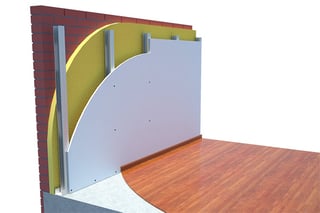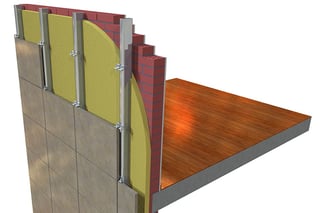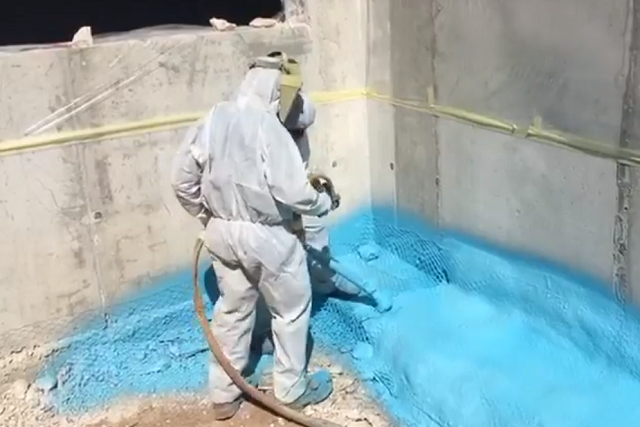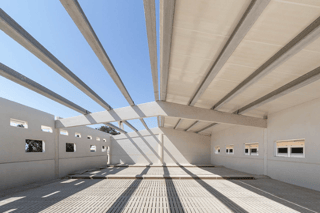Knowing the insulation needs of buildings is fundamental to improve their energy efficiency and so that they make a more intelligent use of energy. Therefore, designing their envelope with the optimum insulation thickness is the best strategy to get the most benefits at the lowest cost.
Interior insulation of facade
- Optimum thickness and insulation: sprayed polyurethane foam; minimum thickness of layer: 30 mm. Minimum density: 35 kg/m3.
The available space determines and limits the thickness of the insulation applied. The best result is achieved by combining low thermal conductivity and low thickness insulation systems, such as polyurethane with reinforced or direct cladding based on laminated plasterboard as an interior finish.

Exterior insulation of facade
- Optimum thickness and insulation: sprayed polyurethane foam; minimum thickness of layer: 30 mm. Minimum density: 35 kg/m3.

Median facade
- Sprayed polyurethane foam: minimum thickness of layer: 30 mm. Minimum density: 35 kg/m3.
- Optimum thickness and insulation of the protective layer: polyurethane elastomer; polyurethane layer of variable thickness (1.5-3 mm), density 1,000 kg/m3 with coloration. It provides UV protection to polyurethane foam and increases waterproofness and consistency.
Filling of air gaps
- Optimum thickness and insulation: low density injected polyurethane foam, 12 kg/m3 initial, being able to reach 18 to 25 kg/m3 applied and λ 0.038 W/(m • K) filled with a minimum thickness of 40 mm.
Before its application, it is important to check the continuity of the gap and the existence of a minimum thickness of filling.

Flat cover
- Optimum thickness and insulation: polyurethane foam; minimum thickness of layer: 30 mm. Minimum applied density: 45 kg/m3 in covers to ensure impermeability.
- Optimum thickness and insulation of the protective layer: polyurethane elastomer; Polyurethane layer of variable thickness (1.5-3 mm), density 1,000 kg/m3 with coloration. It provides UV protection to the polyurethane foam and increases the impermeability of the cover.


Sloped cover
- Optimum thickness and insulation: polyurethane foam; minimum thickness of layer: 30 mm. Minimum density: 45 kg/m3 in covers to ensure impermeability.
- Optimum thickness and insulation of the protective layer: polyurethane elastomer; Polyurethane layer of variable thickness (1.5-3 mm), density 1,000 kg/m3 with coloration. It provides UVA protection to the polyurethane foam and increases the impermeability of the cover.


The optimum polyurethane thicknesses can vary according to the geographic area where the building is located, so it will be necessary to check the regulations in this respect in order to use the appropriate values.
Sources: Institute for the Diversification and Saving of Energy, IDAE.










